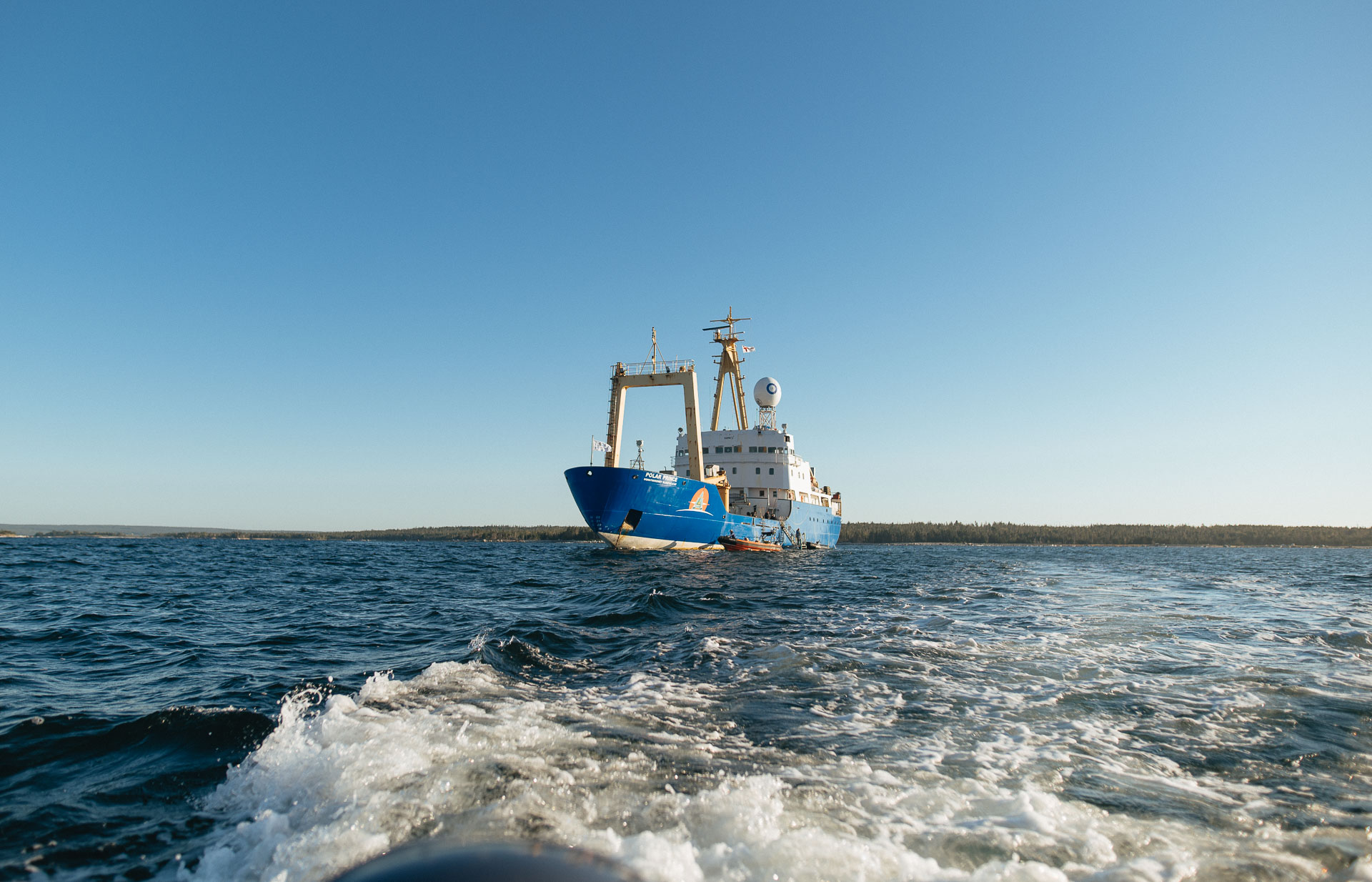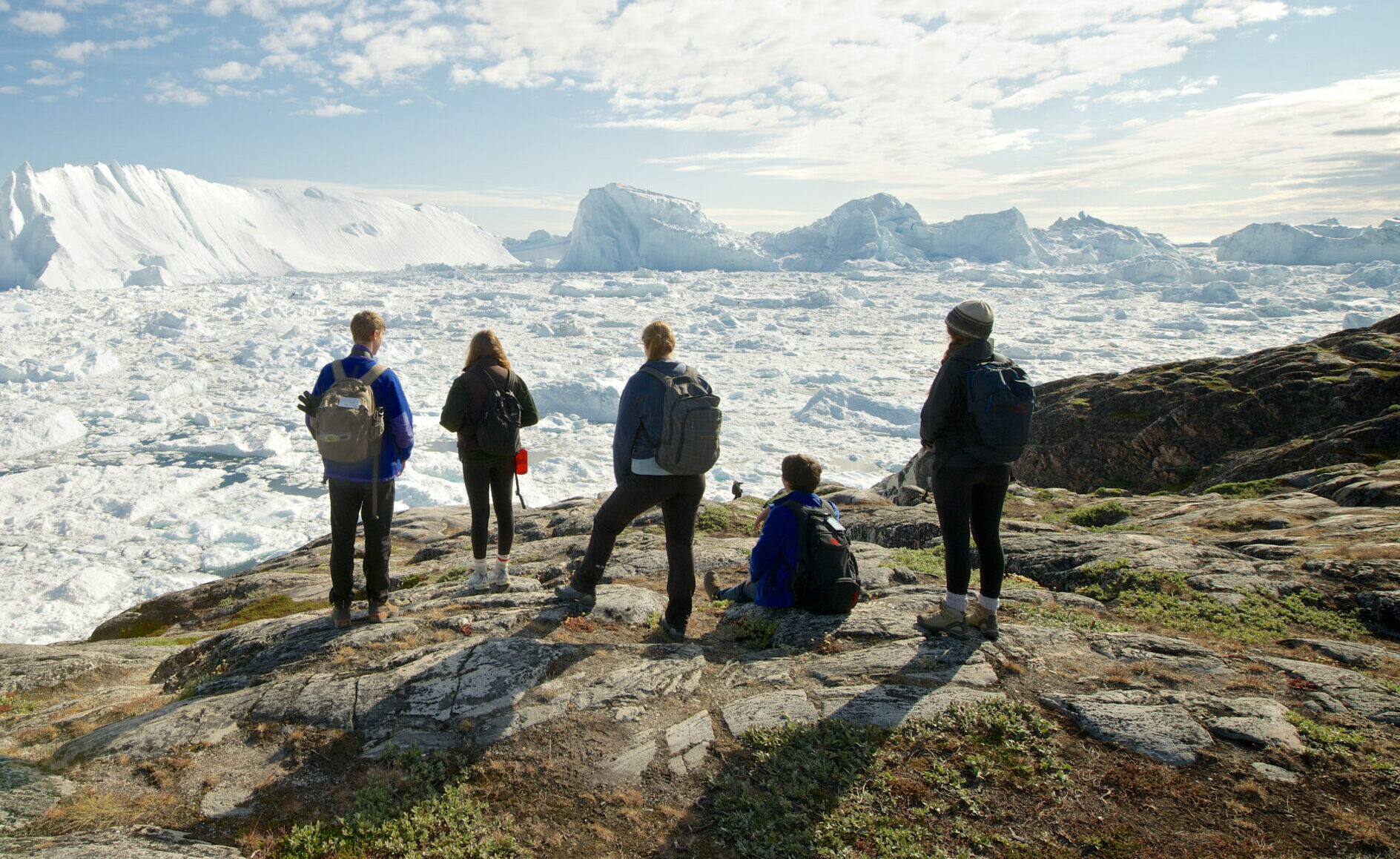Kalaallit Nunaat to Nunavut Expedition: Update Three
On our fourth day in Greenland, we drove our Zodiacs through a mosaic of icebergs to the landing site for our tundra hike toward a beautiful lake in Ikorfat. With no predetermined path, the group had the freedom to walk across the tundra and observe the beauty and diversity of the flora, which included lichens, mosses, and mushrooms.

Later in the afternoon, we went for a Zodiac cruise to observe and discuss ice and geology. We navigated through various impressive, artistic icebergs, and meandered through patches of brash ice. We learned about how the ice gets its distinct blue colour, and the mechanism by which some ice blocks become almost entirely transparent. Our enthusiastic Quark guide Steffen lifted a large hunk of one of these ice blocks into the Zodiac, and proceeded to bring it to the ship.
The next day started with a coastline Zodiac cruise near Qeqertarsuaq. This area is home to incredible basalt formations: basalt pillows and hexagonal columns that form when lava cools from evenly spaced “centre spots.” We were in awe of the power water had in shaping this landscape, from the waterfalls cascading down the basalt to the way the waves had carved caves into the cliffs over time. In the afternoon we visited the town of Qeqertarsuaq, where many of the group embarked on a three-hour gruelling hike to a nearby canyon. The views of the town–complete with icebergs in the background and fog rolling in–were incredibly rewarding. Finally, to cap off a packed day Peter and Iben, Quark staff from Greenland, answered the group’s questions about Greenlandic Inuit culture.

On our first day out into the deep sea of Baffin Bay, we enjoyed a slower morning along with scientific and cultural lectures about the landscapes, wildlife, and the Inuit of the Arctic. Importantly, we learned the difference between glacial and sea ice. Glacial ice is formed from freshwater on land, while sea ice is formed from salt water and is much flatter in shape.
We got to see the difference firsthand when, at around noon, our ship reached the sea ice in the middle of Baffin Bay. We immediately stationed ourselves on the outer decks in hopes of observing marine mammals and birds. While no marine mammals materialized, countless birds created a flurry of activity amidst the ice. Just as we returned inside for our final lecture of the day, the sighting of a bowhead whale was emphatically sounded over the PA system. Many of us were fortunate to spot the distant blow of this fascinating Arctic whale. Bowhead whales are the only large whales that remain in the Arctic year round, and are the longest-lived mammals on the planet with a lifespan of up to 200 years. Most other whales live between 35-90 years.

Our observations of biodiversity amidst the sea ice helped to underscore our learning about the importance of sea ice to the Arctic ecosystem. We have learned that the rapid loss of sea ice will have a myriad of interconnected impacts on local people and ecosystems.





